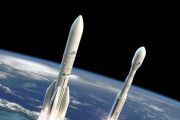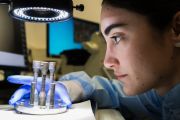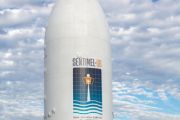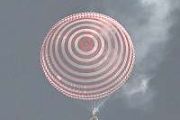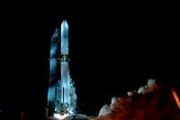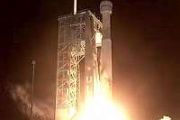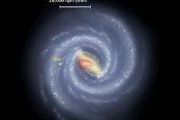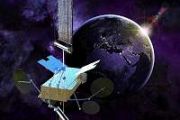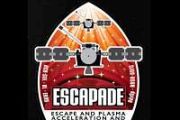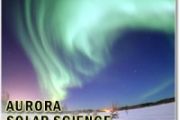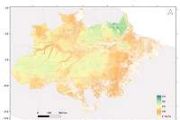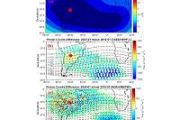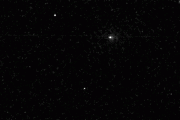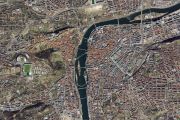
Copernical Team
Carbon Monoxide Dynamics Offer New Insights into Exoplanet Habitability
 In the ongoing quest to discover habitable worlds beyond our solar system, a groundbreaking study spearheaded by Associate Professor Kazumi Ozaki from Tokyo Institute of Technology and Associate Researcher Yasuto Watanabe from The University of Tokyo introduces a novel criterion for identifying potentially habitable exoplanets.
Published in the Astrophysical Journal on January 10, 2024, th
In the ongoing quest to discover habitable worlds beyond our solar system, a groundbreaking study spearheaded by Associate Professor Kazumi Ozaki from Tokyo Institute of Technology and Associate Researcher Yasuto Watanabe from The University of Tokyo introduces a novel criterion for identifying potentially habitable exoplanets.
Published in the Astrophysical Journal on January 10, 2024, th Unveiling Lunar Secrets: Chang'e-5 Mission's Groundbreaking Findings
 The moon's cratered surface, reminiscent of Swiss cheese, narrates a tale of celestial bombardment. These craters, however, are just the beginning of the story. The intense collisions that formed them also transformed the lunar regolith-the layer of loose, heterogeneous material covering solid rock-altering its mineral composition and structure. The Chang'e-5 mission, China's latest venture in l
The moon's cratered surface, reminiscent of Swiss cheese, narrates a tale of celestial bombardment. These craters, however, are just the beginning of the story. The intense collisions that formed them also transformed the lunar regolith-the layer of loose, heterogeneous material covering solid rock-altering its mineral composition and structure. The Chang'e-5 mission, China's latest venture in l Rocket Lab Boosts Capital with $355 Million in Convertible Senior Notes Amid Growth Plans
 Rocket Lab USA, Inc. (NASDAQ: RKLB), a key player in the aerospace manufacturing and satellite launch sectors, has successfully closed its private offering of $355 million in 4.250% convertible senior notes due in 2029. This offering combines an upsized initial offering of $300 million with an additional $55 million option fully exercised by initial purchasers, underscoring strong investor confi
Rocket Lab USA, Inc. (NASDAQ: RKLB), a key player in the aerospace manufacturing and satellite launch sectors, has successfully closed its private offering of $355 million in 4.250% convertible senior notes due in 2029. This offering combines an upsized initial offering of $300 million with an additional $55 million option fully exercised by initial purchasers, underscoring strong investor confi US to launch next Moon mission on Valentine's Day
 US companies are set to launch for the Moon on February 14, less than a month since a similar mission ended in failure with the spaceship burning up in the Earth's atmosphere, NASA said Wednesday.
The upcoming attempt features a lander built by Houston-based Intuitive Machines fixed to the top of a SpaceX rocket, while the last try involved a United Launch Alliance rocket and Astrobotics lan
US companies are set to launch for the Moon on February 14, less than a month since a similar mission ended in failure with the spaceship burning up in the Earth's atmosphere, NASA said Wednesday.
The upcoming attempt features a lander built by Houston-based Intuitive Machines fixed to the top of a SpaceX rocket, while the last try involved a United Launch Alliance rocket and Astrobotics lan Space Beach Law Lab: Shaping the Future of Space Law at Queen Mary Conference
 In a world where the final frontier is becoming as much a domain of lawyers and legislators as it is of astronauts and engineers, the inaugural Space Beach Law Lab conference is poised to mark a significant milestone in the evolving discourse of space law and policy. Set against the historical backdrop of the Queen Mary ocean liner in Long Beach, California, from February 27 to 29, 2024, this ev
In a world where the final frontier is becoming as much a domain of lawyers and legislators as it is of astronauts and engineers, the inaugural Space Beach Law Lab conference is poised to mark a significant milestone in the evolving discourse of space law and policy. Set against the historical backdrop of the Queen Mary ocean liner in Long Beach, California, from February 27 to 29, 2024, this ev Space Pioneer and LandSpace Lead China's Private Sector to New Heights in Space
 In the dynamic arena of global space exploration and satellite technology, China's private space sector marked a pivotal year of achievements and breakthroughs, firmly establishing itself as a formidable force on the international stage. The journey from state-dominated endeavors to the flourishing of private enterprises in space technology showcases not only the technological prowess but also t
In the dynamic arena of global space exploration and satellite technology, China's private space sector marked a pivotal year of achievements and breakthroughs, firmly establishing itself as a formidable force on the international stage. The journey from state-dominated endeavors to the flourishing of private enterprises in space technology showcases not only the technological prowess but also t Sidus Space Enhances IP Portfolio with New Patent Application for Modular LizzieSat System
 Sidus Space, Inc. (NASDAQ: SIDU), a leader in satellite manufacturing, has recently made a significant move to bolster its intellectual property portfolio with the publication of a new U.S. patent application by the U.S. Patent and Trademark Office. The application, numbered 2023/0406548-A1 (the '548 patent application), seeks to provide comprehensive protection for the innovative functionalitie
Sidus Space, Inc. (NASDAQ: SIDU), a leader in satellite manufacturing, has recently made a significant move to bolster its intellectual property portfolio with the publication of a new U.S. patent application by the U.S. Patent and Trademark Office. The application, numbered 2023/0406548-A1 (the '548 patent application), seeks to provide comprehensive protection for the innovative functionalitie Dream Chaser Spaceplane Undergoes Extreme Testing at NASA's Armstrong Facility
 At NASA's Neil Armstrong Test Facility in Sandusky, Ohio, Sierra Space's Dream Chaser spaceplane, paired with its Shooting Star cargo module, has captivated media and space industry professionals alike. Illuminated by soft blue lights, the 55-foot-tall assembly stands ready, undergoing a series of tests designed to simulate the harsh realities of space travel.
Dr. Jimmy Kenyon, the center
At NASA's Neil Armstrong Test Facility in Sandusky, Ohio, Sierra Space's Dream Chaser spaceplane, paired with its Shooting Star cargo module, has captivated media and space industry professionals alike. Illuminated by soft blue lights, the 55-foot-tall assembly stands ready, undergoing a series of tests designed to simulate the harsh realities of space travel.
Dr. Jimmy Kenyon, the center New Satellite Launch Marks a Milestone in China's Commercial Space Sector
 The recent launch of the "Xunming Hometown I" satellite in Yangjiang, Guangdong province, signifies a notable advancement in China's commercial space sector. This low-earth orbit satellite, having successfully entered its target orbit, exemplifies the country's growing prowess in space technology, coupled with a unique cultural integration.
The "Xunming Hometown I" is a product of collabor
The recent launch of the "Xunming Hometown I" satellite in Yangjiang, Guangdong province, signifies a notable advancement in China's commercial space sector. This low-earth orbit satellite, having successfully entered its target orbit, exemplifies the country's growing prowess in space technology, coupled with a unique cultural integration.
The "Xunming Hometown I" is a product of collabor WSF-M Satellite will enhance military environmental monitoring with new microwave imager
 Ball Aerospace has announced the successful delivery of the Weather System Follow-on - Microwave (WSF-M) satellite to Vandenberg Space Force Base, marking a significant milestone in the U.S. Space Force's efforts to enhance operational environmental monitoring capabilities. This satellite, delivered to Santa Barbara County, California, represents the first of two sophisticated systems that Ball
Ball Aerospace has announced the successful delivery of the Weather System Follow-on - Microwave (WSF-M) satellite to Vandenberg Space Force Base, marking a significant milestone in the U.S. Space Force's efforts to enhance operational environmental monitoring capabilities. This satellite, delivered to Santa Barbara County, California, represents the first of two sophisticated systems that Ball 

